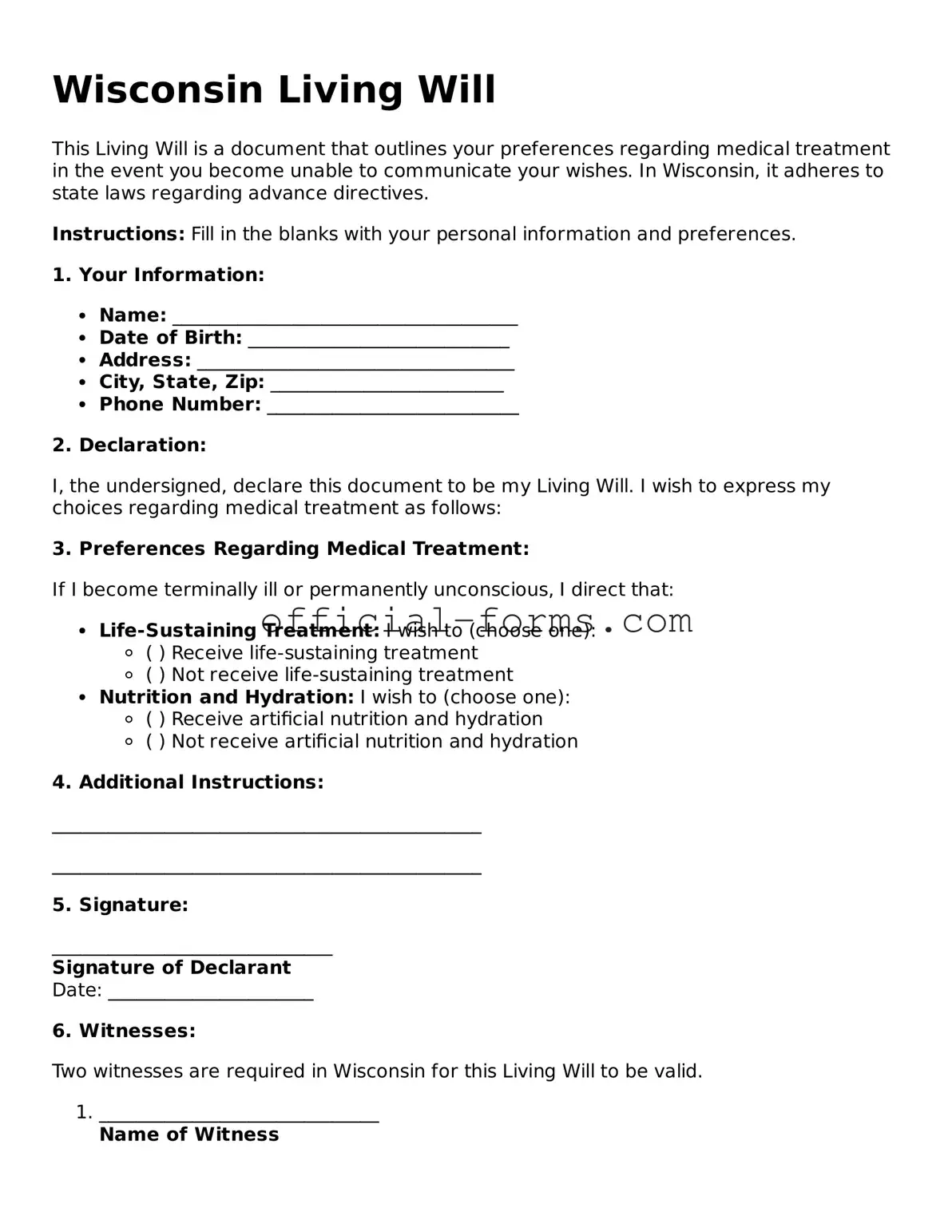Filling out a Wisconsin Living Will form is an important step in ensuring that your healthcare wishes are honored. However, many individuals make mistakes that can lead to confusion or even disputes among family members and healthcare providers. Here are ten common errors to avoid when completing this crucial document.
One frequent mistake is not being specific enough about your wishes. Vague language can lead to misunderstandings. It’s essential to clearly outline your preferences regarding medical treatments, such as whether you want life-sustaining measures or not.
Another error involves failing to date the document. A Living Will should be dated to establish when it was created. Without a date, it can be challenging to determine if your most recent wishes are reflected in the document.
Many people also overlook the importance of signing the form in the presence of witnesses. Wisconsin law requires that your Living Will be signed by two witnesses who are not related to you and who will not benefit from your estate. Skipping this step can render your document invalid.
It’s also common for individuals to forget to review and update their Living Will periodically. Life circumstances change, and so might your healthcare preferences. Regularly revisiting your Living Will ensures it accurately reflects your current wishes.
Some individuals neglect to discuss their Living Will with family members. Open communication can prevent confusion and conflict when the time comes to make healthcare decisions. Informing your loved ones about your wishes can ease their burden during a difficult time.
Another mistake is not providing copies of the Living Will to your healthcare providers and family. It’s crucial that those involved in your care have access to this document. Without copies, your wishes may not be honored when it matters most.
People often misinterpret the role of a healthcare proxy and confuse it with a Living Will. While a Living Will outlines your wishes, a healthcare proxy designates someone to make decisions on your behalf if you are unable to do so. Ensure both documents are in place for comprehensive coverage.
Additionally, some may ignore the need for clear language in the document. Legal terminology can be confusing. Use straightforward language that clearly conveys your intentions to avoid misinterpretation.
Another common oversight is not considering potential scenarios. Think through various medical situations and how you would like to be treated in each case. This foresight can help you create a more comprehensive and effective Living Will.
Lastly, individuals sometimes assume that a Living Will is the only document needed for end-of-life planning. In reality, it should be part of a broader estate plan, which may include a durable power of attorney and other relevant documents. A comprehensive approach ensures that all your wishes are respected.
By being aware of these common mistakes and taking steps to avoid them, you can create a Living Will that truly reflects your healthcare wishes and provides peace of mind for you and your loved ones.
